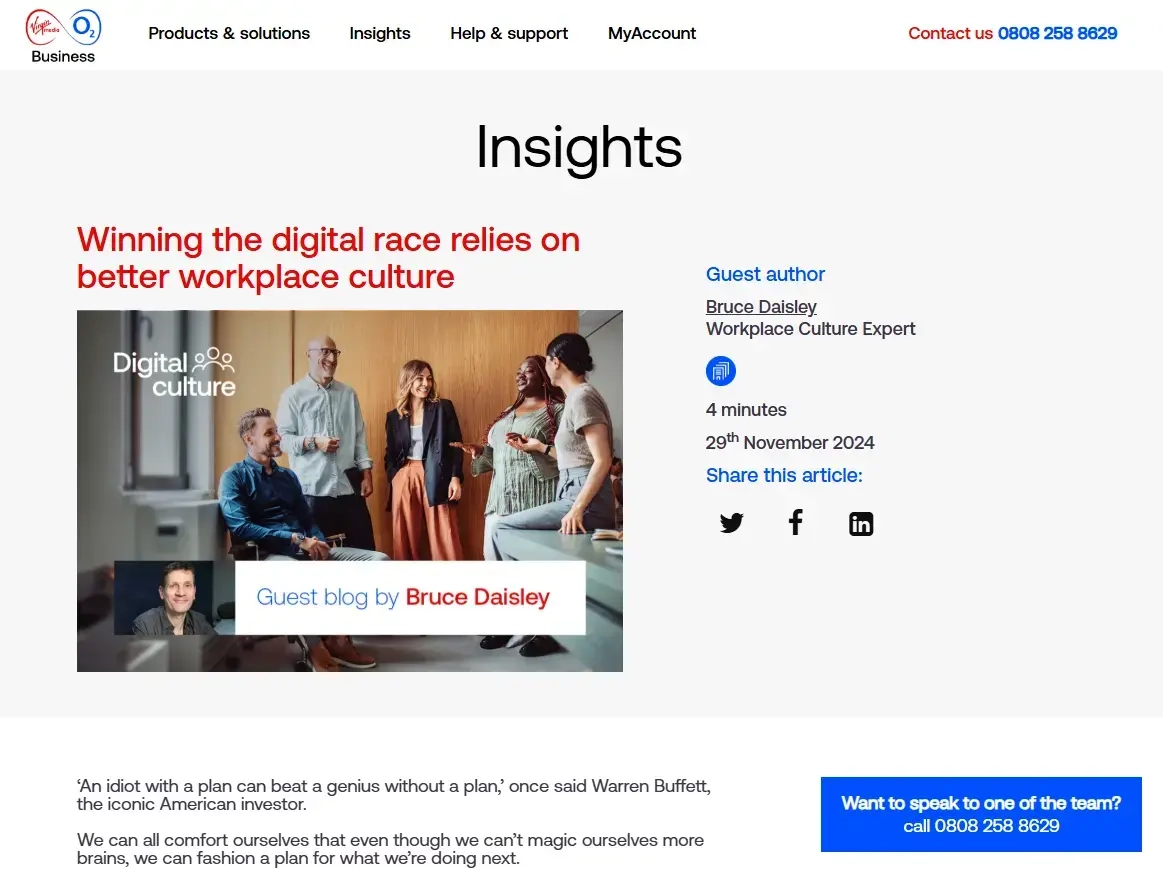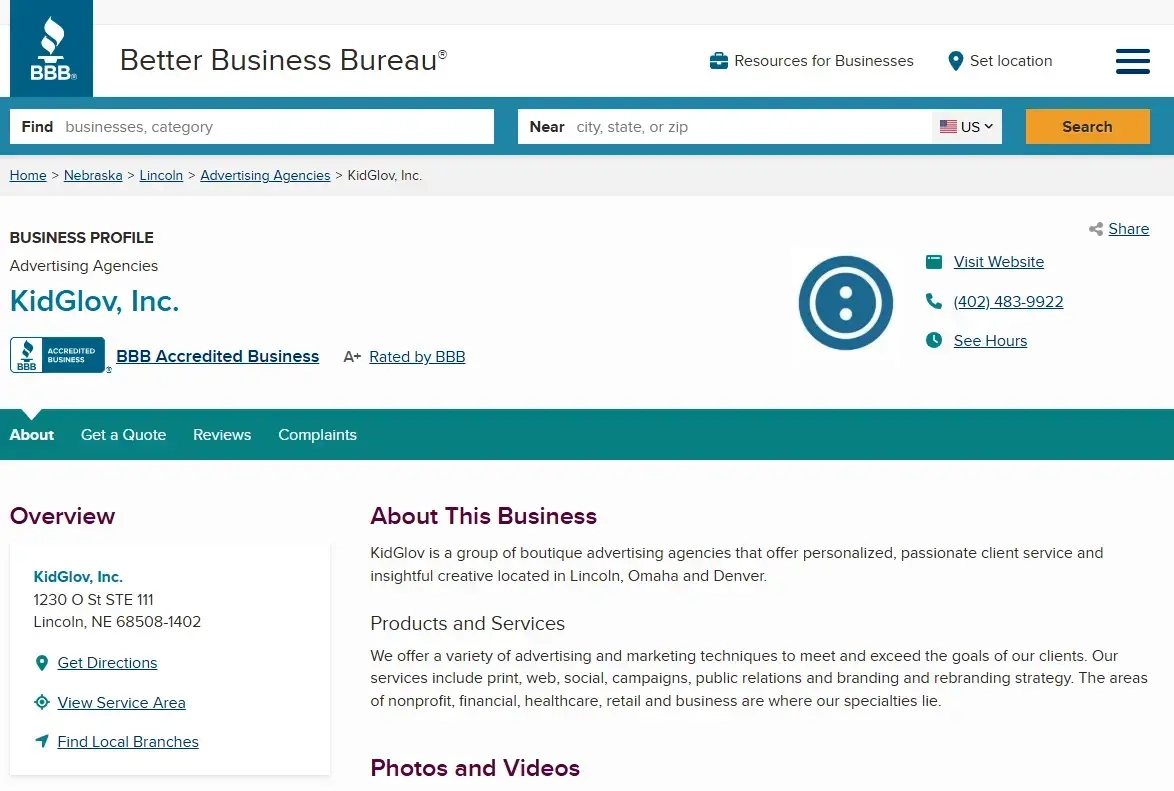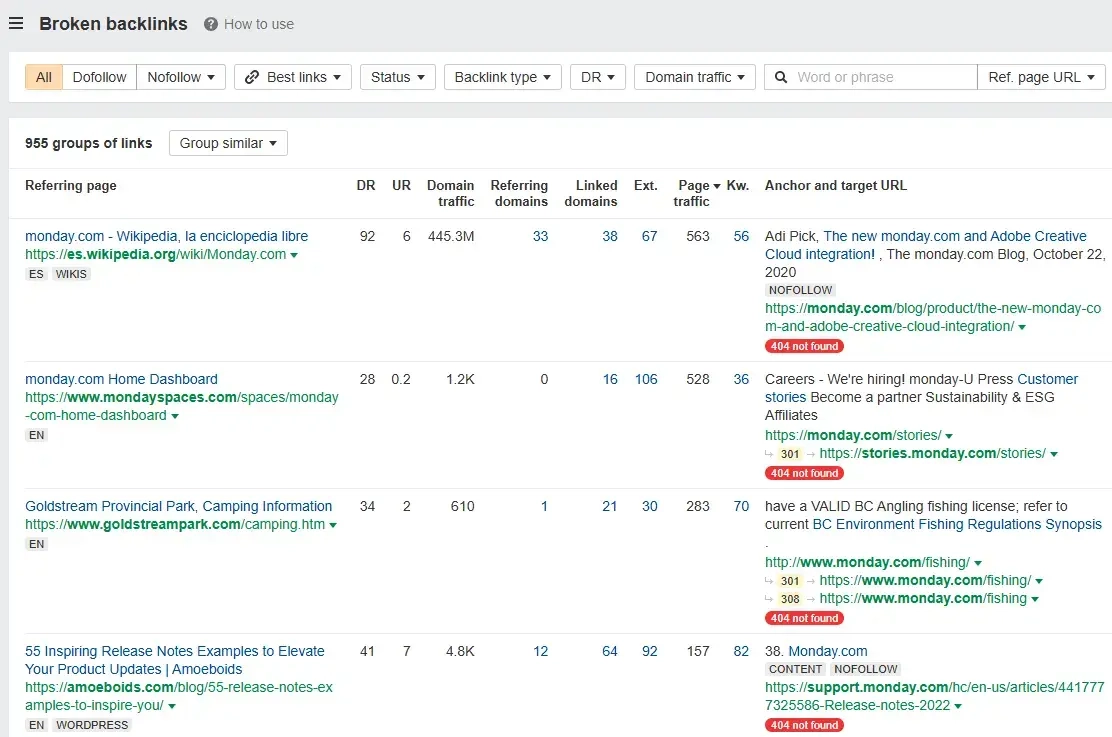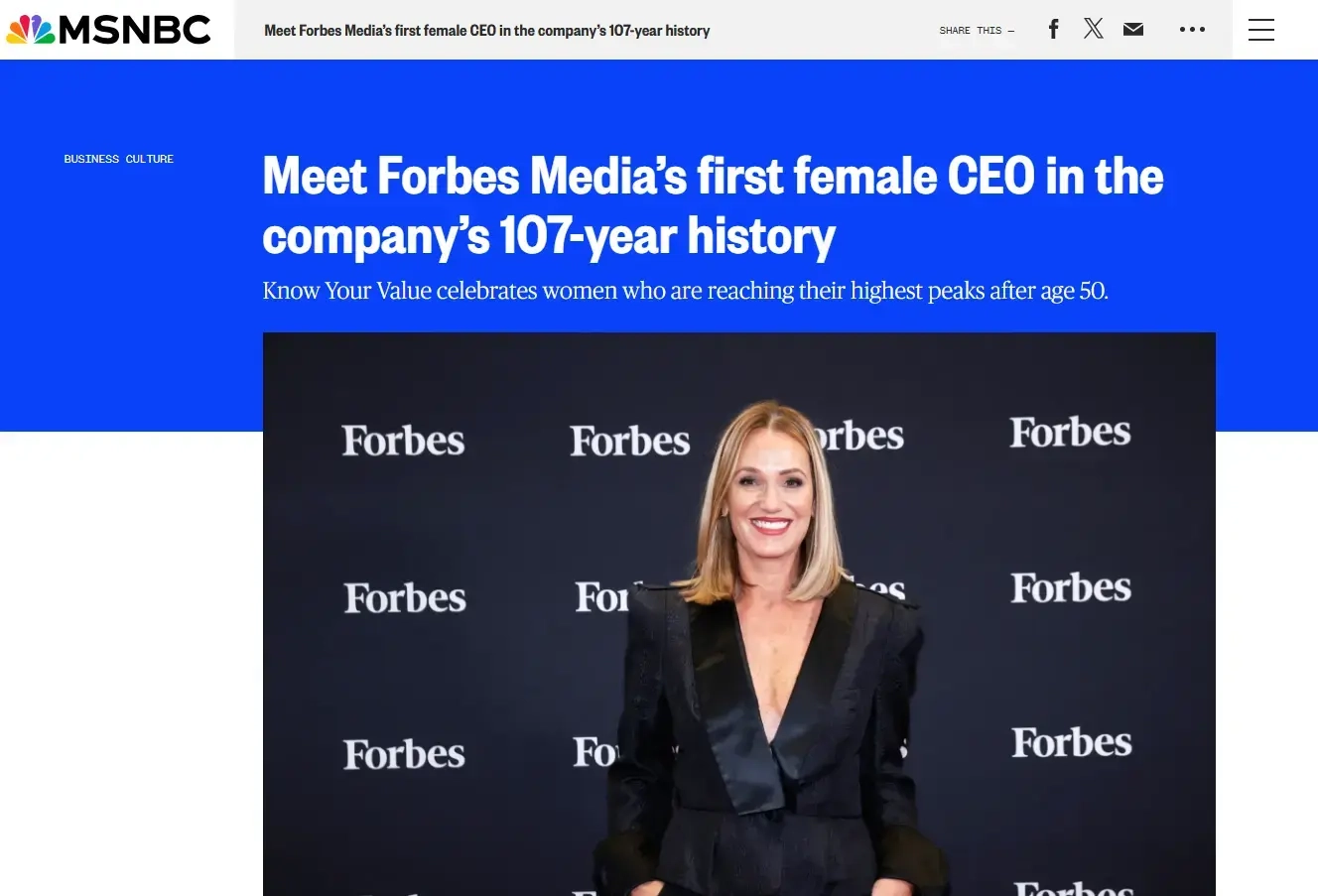
The Ultimate Guide To B2B Link Building: Strategies For Earning High-Quality Backlinks
Link building is a critical part of business-to-business (B2B) search engine optimization (SEO), helping companies improve their search rankings, drive targeted traffic, and establish authority in their industry.
Unlike business-to-consumer (B2C) link building, which often focuses on viral content and mass outreach, B2B link building requires a more strategic approach.
However, earning high-quality backlinks from authoritative sources, such as industry publications, professional blogs, and business directory sites, can be significantly challenging.
Securing these backlinks requires a lot of time and resources, as well as a certain level of expertise. We believe this is why 90% of B2B content lacks backlinks.
In this guide, we’ll walk you through some foundational B2B link-building techniques and some more advanced tactics so you can build a robust and sustainable backlink profile for your business.
What Is B2B Link Building?
B2B link building is the process of acquiring backlinks from other business-related websites. These links point to your website and improve your company’s search engine rankings, authority, and online visibility.
Unlike B2C link building, which often targets a broad consumer audience, B2B strategies focus on securing links from industry-relevant sites such as business blogs, trade publications, SaaS platforms, and professional directories.
Since B2B sales cycles are longer and more relationship-driven, you may need to use more advanced link-building strategies to acquire backlinks that build authority, drive traffic, and improve search rankings for business-related keywords.
We’ll cover these advanced strategies later in this article.
Foundational B2B Link Building Techniques
Now that you know more about B2B link building, let’s unpack some of the more basic techniques you can use to build these links. We’ll take a closer look at some advanced tactics later in this article.
🔗 Guest posting
Guest posting, also known as guest blogging, is one of the most effective B2B link-building strategies, with over 50% of marketers saying it’s the most powerful tactic.
It involves writing and publishing articles on authoritative third-party websites within your industry. By contributing valuable content to reputable sites, businesses can earn high-quality backlinks, establish thought leadership, and reach a wider audience.
Securing backlinks from authoritative websites improves your search engine rankings and exposes your brand to a highly targeted audience.
A well-placed guest post can also drive relevant traffic to your website, resulting in new business opportunities.
Below is a guest blog post written by a workplace culture expert for the B2B website, Virgin Media O2 Business. This post has earned the author a backlink to his B2B podcast:


👉 How to find B2B guest posting opportunities
Finding the right websites for guest posting requires some strategic research. Here are a few proven methods:
Google Search operators: Use queries like “write for us” + [industry keyword] or “guest post guidelines” + [industry keyword] when searching on Google.
Competitor backlink analysis: Use SEO tools like Ahrefs, SEMrush, or Moz to analyze where your competitors have published guest posts.
Industry blogs and publications: Identify leading blogs, trade magazines, and news sites within your industry that accept guest contributions.
LinkedIn: Engage with industry leaders and bloggers on this platform to discover guest posting opportunities.
🔗 The skyscraper technique
The skyscraper technique is a popular link-building strategy that involves finding high-performing content in your industry, creating a better version of it, and then reaching out to websites that linked to the original piece.
In a case study by Hubspot, the skyscraper technique brought in more than 70,000 page views for a single post.
This method works particularly well for B2B link building because businesses value authoritative, data-driven, and insightful content.
By using the skyscraper technique effectively, B2B companies can attract backlinks from industry blogs, trade publications, and authoritative websites, improving their credibility and search engine rankings.
The skyscraper technique is effective in B2B industries because it:
✅ Leverages proven demand: Instead of guessing what content will perform well, you’re improving existing content that already attracts links.
✅ Establishes thought leadership: Creating the best resource on a relevant topic positions your brand as an authority in your industry.
✅ Generates high-quality links: Websites that linked to the original content are likely to link to your improved version (if it’s good enough, of course).
✅ Supports long-term SEO growth: High-value content continues to attract backlinks and drive organic traffic over time.
👉 How to execute the skyscraper technique
Follow these steps to use the skyscraper technique effectively:
Find high-performing content: Use SEO tools to identify industry-related content with a strong backlink profile. Look for outdated reports, incomplete guides, or popular blog posts that could be improved.
Create a superior version: Enhance the content by adding updated data, better formatting, more detailed insights, and engaging visuals like infographics or charts. Make it the best resource on the topic!
Identify linking websites: Use backlink analysis tools to find websites that have linked to the original content. These are your prime outreach targets.
Reach out and promote your content: Contact the website owners with a concise, personalized pitch explaining why your version is more valuable.
Amplify your content: Maximize the reach of your content by sharing it on LinkedIn, industry forums, and email newsletters and repurposing it into different formats like videos or social media posts.
🔗 Linkable content
Linkable content refers to high-value content assets specifically designed to attract backlinks from authoritative websites.
Over 36% of SEO experts believe in building linkable assets as a strategy to build high-authority links.
Unlike standard blog posts, linkable content offers unique insights, data, or resources that make it highly shareable within an industry.
When done right, it helps establish credibility, improves SEO, and generates organic backlinks from reputable sources.
Publishing valuable insights also positions your company as a thought leader in your field and can capture leads when gated behind an email signup.
In the example below, Ahrefs has designed linkable content in the form of a report template that SEO businesses can use. The template has almost 500 backlinks:

👉 How to create B2B linkable content
Creating B2B linkable content requires strategy, research, and promotion. Follow these steps to develop high-value assets that attract backlinks:
Identify industry pain points: Research customer challenges, competitor content, and industry trends to find topics with high link potential.
Choose the right format: Select content types that earn backlinks, such as industry reports and surveys, ultimate guides, and interactive tools.
Conduct research and format your content: Use internal data, surveys, and credible third-party sources to provide unique insights. Format your content for readability with clear headings, visuals, and actionable takeaways.
Implement SEO best practices: Optimize for relevant industry keywords, use internal linking, and craft compelling meta descriptions to increase visibility.
Promote for maximum backlinks: Share your content with relevant publications, engage with professionals in your niche, and reference your content in external articles.
Keep your content updated: Regularly refresh statistics, add new insights, and track your backlinks to maintain relevance.
🔗 Directory link building
B2B directory link building involves submitting your business to reputable online directories to gain high-quality backlinks.
These directories help businesses improve search visibility, establish credibility, and generate referral traffic from industry-specific platforms.
While directory links may not have the same impact as editorial links, for example, they’re an essential foundation for a strong B2B link-building strategy.
There are four main reasons why directory link building is important:
1. Boosts domain ratings: Many B2B directories have a high domain authority (DA) and DR—a metric by Ahrefs that measures your backlink profile—making these backlinks valuable for SEO.
2. Improves local and industry visibility: Being listed in relevant directories helps businesses get discovered by potential clients and partners.
3. Generates referral traffic: Businesses searching for vendors or service providers often use directories, leading to targeted traffic.
4. Enhances brand trust: A presence on reputable directories signals legitimacy to both search engines and clients.
This B2B marketing agency has acquired a backlink in the Better Business Bureau directory:

👉 How to execute directory link building
Below is how you can achieve directory listings to boost your backlink profile:
Find relevant directories: Identify high-authority directories that align with your industry and target audience. Prioritize platforms with strong domain ratings and relevant traffic.
Optimize your listing: Ensure your business profile is complete and consistent across all directories with keyword-rich descriptions and high-quality visuals.
Focus on quality over quantity: Avoid low-quality or spammy directories, which typically have loads of ads, and thin content. Stick to reputable industry-specific and local directories that provide real value.
Monitor and update your listings: Regularly update your business details, respond to reviews, and track performance using Google Analytics or SEO tools.
🔗 Broken link building
Broken link building is a robust link acquisition strategy that involves identifying broken (dead) links on industry-relevant websites and offering your own content as a replacement.
Some people consider broken link building an outdated tactic, but over 13% of marketers still use it.
This method benefits both parties: website owners get to fix broken user experiences, while your business earns valuable backlinks.
B2B productivity tool Monday.com has almost 1,000 broken backlinks that they could fix to acquire high-quality links:

👉 How to get B2B broken link building right
Here’s how to go about fixing broken links to get high-quality B2B backlinks:
Find broken links on industry websites: Use SEO tools to identify broken external links on authoritative websites in your niche.
Create or identify relevant replacement content: Check what content the link originally pointed to. If you have an existing page that covers the same topic, use it as a replacement. If not, create a high-quality, updated version.
Reach out to website owners: Send a polite, value-driven outreach email to the site owner or editor. Your message should mention the broken link and its location on their website and offer your replacement content as a solution.
Follow up and track results: If you don’t receive a response within a week, send a follow-up email. Tracking new backlinks using Google Search Console or SEO tools is also essential.
🔗 Unlinked brand mentions
Unlinked mention link building involves finding online mentions of your brand, products, or executives that don’t link back to your website and requesting a backlink.
Since these mentions already indicate some level of recognition, converting them into links is often easier than other outreach-based link-building strategies.
To find unlinked mentions, you can use the following methods:
Google Search operators: Search for your brand name in quotes (“Your Brand Name - site:yourdomain.com") to find references on external websites.
SEO Tools: You can use Ahefs, SEMrush, or BrandMentions to discover unlinked mentions.
This news article mentions Forbes’s CEO by name but doesn’t link to any pages relating to her. This could be converted into a high-quality backlink to Forbes’s website:

👉 How to turn unlinked mentions into backlinks
Follow these steps to convert unlinked brand mentions into links:
Verify that the mention is valuable: Not all unlinked mentions are worth pursuing. Focus on mentions from authoritative industry blogs, news sites, and B2B publications that can provide SEO value.
Identify the right contact: Use LinkedIn or website contact pages to find the editor or website owner responsible for the content.
Craft an outreach email: Send a concise and friendly request, highlighting appreciation for the mention, how linking to your site improves the user experience, and a direct link to the page where they can add your link.
🔗 PR backlinks
B2B PR backlinks are links earned from media coverage, press releases, and mentions by journalists.
These backlinks typically come from high-authority news sites, industry publications, and professional blogs, making them some of the most valuable links your business can acquire.
By leveraging digital PR strategies, your business can gain not only SEO benefits but also increased brand credibility and exposure. Over 55% of digital PR campaigns are built around 10 links.
B2B PR backlinks are valuable for the following reasons:
✅ High-authority links: Media outlets and industry publications typically have high authority and domain ratings, improving your site’s rankings.
✅ Brand visibility and trust: PR backlinks from reputable sources establish credibility in your industry.
✅ Referral traffic: A link in a high-traffic news article can drive targeted visitors to your website.
✅ Long-term SEO benefits: Unlike some other link-building tactics, PR backlinks tend to be permanent and continuously generate traffic because they’re typically from high-traffic publications that are visited regularly.
By submitting its press release to Business Wire, Hudson Pacific Properties has gained a relevant PR backlink to its site from a site with a domain rating (DR) of 92:

👉 How to earn PR backlinks
Now, let’s unpack how you can acquire PR backlinks:
Develop newsworthy content: To attract media attention, create content that journalists and industry blogs want to cover, such as original research, industry trends, data reports, company announcements, and expert commentary.
Leverage press releases: Distribute press releases through services like PR Newswire, Business Wire, or GlobeNewswire to secure media coverage and backlinks from news sites.
Pitch guest contributions and op-eds: Submit opinion pieces and thought leadership articles to industry news sites, business magazines, and trade publications to earn editorial backlinks.
Advanced B2B Link Building Techniques
Now that you have some basic link-building techniques under your belt, let’s look at some advanced tactics that can help you acquire solid backlinks:
🔗 Newsjacking
Newsjacking is a challenging but effective way to generate PR backlinks. As mentioned above, PR links involve proactively creating something newsworthy that journalists will want to print.
They are particularly valuable because:
✅ They tend to get placed by high-authority news websites.
✅ The subject matter of the linking content is usually super-relevant to what you do.
✅ Other people will likely link to your content once they have read about it.
Newsjacking is similar, but it entails reacting to an emerging story. This could involve:
Giving an opinion on the news.
Providing additional insight.
Offering a solution to the problem.
Saying something interesting or amusing on the same subject.
Newsjacking is tricky because:
You have to monitor the news constantly.
You never know when an opportunity will arise.
You have to act fast before interest in the story dies down.
A good example of a newsjacking campaign is our Trump Tax Fraud Campaign, which we collaborated on with our client, the Accounting Institute for Success (AIS):

U.S. President Donald Trump had been making headlines due to questions over nonpayment of taxes. With their understanding of the U.S. tax system, AIS’s experts were perfectly placed to provide the media with extra detail on the subject.
We created an infographic explaining each instance of tax fraud the President had committed throughout his life. It earned over 150 backlinks, including a few from high-authority sites like Slashdot and Mashable.
👉 How to newsjack
Successful newsjacking requires you to act fast and be sensitive to what makes a good opportunity.
Have a team on hand: You need people available to come up with great ideas and then sell them to journalists at a moment’s notice. Avoid giving your newsjacking team other high-priority work that can’t be put aside. Paying for someone to do this is likely to be expensive.
Use news alerts and aggregator tools: This will allow you to keep up-to-date with breaking stories.
Know your audience: Focus on news items your audience will find interesting and target news publications they read.
Focus on your area of expertise: Only pursue opportunities where you can add value.
Avoid topics that are too controversial: If you try newsjacking a controversial topic, you risk getting embroiled in online arguments or even attracting negative press.
🔗 Tiered link building
Tiered link building isn’t actually a link-building technique. Instead, it’s a strategy that guides the types of links you build and which websites you build them with.
According to a recent survey of 113 SEO experts, 92% of them believe their competitors buy links. However, tiered link building gives you a competitive edge that paying for links can’t.
In other words, you’ll still need to use techniques like guest posting or newsjacking to build the actual links.
It involves improving your off-page SEO by building links in layers. You start off building links that point directly to your website—these are called tier-one links.
Next, you build links to the pages those tier-one links to your website come from—these are tier-two links. You then build links to the pages with tier-two links—these are tier-three links.

This gives you a broad network of links that will boost your rankings. Why? Tiered link building gives you a strong, diverse backlink profile consisting of links of varying quality.
When search engines see a varied link profile, they think it looks natural. When it comes to choosing which ones to rank higher in their results pages, search engines are more likely to favor relevant websites with natural backlink profiles.
👉 How to implement tiered link building
Tiered links should be built in a pyramid shape. In other words, you’ll have about 10 tier-two links pointing to every tier-one link and about 30 tier-three links pointing to every tier-one link.
The quality of the links you place can be lower the further removed from your own website they are.
In other words, tier-one links should be the most relevant, high-authority links you can get. For example, editorial links in well-known industry publications.
Tier two links must also be relevant but can be less authoritative. For example, you might place a guest post on a relatively new website in your industry.
Tier three links can be low-quality. Examples include directory links and no-follow links.
Here’s a good example of a tiered link structure:
Tier one:
App developer Wombo has its DreamAI software featured on tech blog TechCrunch. TechCrunch is a high-authority website and one of the leading titles in its industry:

Source: TechCrunch
Tier two:
A slightly less authoritative website, Mac World, has also covered DreamAI. However, it has linked to the TechCrunch article and not Wombo’s website.

Source: Mac World
Tier three:
Techilive.in, a lower quality, less authoritative website, has linked to the Mac World article. This time, the link is not in the body copy, and it’s a no-follow link.

Source: Techilive
⚠️ Note: We’re not saying that Wombo has purposely built this link structure. These backlinks could have been generated completely organically. However, it does exemplify the sort of link hierarchy that you need to aim for.
🔗 Link reclamation
Link reclamation is when you identify links that you have lost and then ask the site owner to fix them.
Over time, you naturally lose links for various reasons, and reclaiming these links is a good way to maintain a healthy backlink profile.
This may sound similar to broken link building, but there’s a significant difference. Broken link building is creating new links by fixing backlinks you never had. Link reclamation is when you fix links you have already built. In other words, you can’t reclaim a link you’ve never owned.
The main reasons that you might lose links are:
404 redirects: Users get a 404 error when they click the link because the URL is broken. This may be because you have changed your URL structure without setting up 301 redirects.
301 redirects: 301 redirects are when a site owner redirects traffic to another page. They usually reproduce the content, but sometimes they delete the page altogether.
The link has been removed: Sometimes, site owners update their content entirely and forget—or choose not to—include the previous links. Over 34% of links are removed, according to a recent study.
The page has been de-indexed: The link still exists, but the search engine has decided that the page is not worthy of its index and removed it, so the value of any links is nullified.
👉 How to reclaim your links
To find lost backlinks, you’ll need an SEO tool like Ahrefs. Here’s how to do it:
1. In Ahrefs’ Site Explorer, enter the domain you want to find lost links for and click “Lost links.”

2. You’ll be shown a calendar with the number of links lost each day, highlighted in red. Click a day or choose a period and click “Show Lost backlinks.”

3. Choose a backlink that you want to reclaim and visit the website.

4. Find the site owner’s contact details and write an outreach email asking them to reinstate the link.
🔗 Use Google Alerts
Google Alerts is great for letting you know when people mention your brand online. This is called unlinked mentions, and it's an effective way to build natural backlinks.
You can take this a step further by using it to boost your PR campaigns or applying it to your products and services.
Example: Backlinko
You can even use Google Alerts to build links to ideas that you contributed that have gained traction.
A good example of this is when Backlinko founder Brian Dean came up with the skyscraper technique.
This link-building concept quickly gained traction, and people across the web began writing about it. Each time it was mentioned, it became an opportunity for Brian to contact the website owner and ask them to link back to his website.
As a result, the Backlinko website has more than 600 backlinks that refer to the skyscraper technique. Some of them have a DR of over 90:

People love an origin story, so there’s a good chance that site owners will want to link back to your website.
Example: MEDDIC
Another good example is the MEDDIC sales technique, which was created by employees at Parametric Technology Corporation (PTC). This wasn’t done as a link-building exercise but still drew links from several DR 50+ websites:

👉 How to set up Google Alerts
1. Go to Google Alerts and enter the topic you want to be alerted to.
2. Enter the topic you want to be alerted to

3. Set your options

4. Click “Create Alert”

You’ll now be emailed every time Google detects content that matches your alert.
🔗 Reverse image search
This is another approach that’s similar to unlinked mentions. Instead of searching for mentions, you search for places where people have used images that you own.
They may have credited you but not linked to your website, or they might have forgotten to credit you altogether. Either way, you can reach out to the site owner and ask them to link to your website.
This approach is particularly useful for site owners who:
Create interesting infographics.
Publish high-quality original images.
Create amusing memes.
👉 How to perform a Google reverse image search
1. Go to Google Images.

2. Type keywords or the image file name into the search bar.

3. Click the camera on the right side of the search bar.

4. Next, you can either:
a. Paste the image URL
b. Upload your image

5. Google will now return a list of potential matches.

6. Visit the website that featured your image and find contact details for the website owner.
7. Write a polite email to the site owner explaining that you own the image. Tell them they are required to attribute it correctly by linking to your website.
🔗 Link intersect
Link intersect is a tool rather than a link-building technique. But it’s a good way to find link-building opportunities.
It’s very simple, but we’ve included it as an advanced technique because you need to have an SEO tool to do it.
Essentially, the tool will scan your competitors’ websites to find domains that link to all of them. If a website already links to several of your competitors, then they will probably be willing to link to your site, too.
You can even add your own site when performing a link intersect—this stops the tool from presenting other websites that already link to you.
Several SEO tools offer this ability, including SEMRush (called Backlink Gap), Moz, and Ahrefs.
As an example, we’re going to demonstrate how to do it with Ahrefs.
👉 How to perform a link intersect
1. In the Ahrefs tool, click “Link intersect” in the toolbar.

2. Type your competitors’ websites where it asks, “Show me who is linking to these domains or URLs.”

3. Add your own website where it says, “But doesn’t link to.”

4. Click “Show link opportunities.”
5. You’ll be presented with a list of potential link-building targets.
6. Click on the numbers to see the individual backlinks.

💡 Pro tip: Research Your Competitors’ Link-Building Strategies
As mentioned above, link intersect won’t build backlinks for you; you’ll still need to choose the best technique. You can do this by seeing what worked for your competitors.
Once you have found a site that links to your competitors, open a few linking pages. Are they guest posts? Have they written useful guides? Perhaps they’ve pulled off digital PR?
Any of these methods have been proven to gain links to that website, so you may want to use them yourself.
🔗 Customer testimonials
We recently started working with a new client. The company was relatively new, so we were surprised to find out that their website already had a decent domain rating.
We investigated and discovered why. The company had written several testimonials celebrating their success with clients. These included high-quality videos, pictures, and case studies.
The clients were flattered to have been featured and so had linked to the testimonials. All these websites had a DR of over 50!
You can do the same with your clients: produce a high-quality testimonial and then reach out politely asking whether they would like to link to it.
Here are some tips for producing great testimonials:
💡 Use professional video producers, high-quality content writers, and designers.
💡 Market your customer’s business as well as your own.
💡 Share it on social media and tag anyone who appeared in the testimonial.
Not to mention, testimonials are great for your business because 92% of consumers are more likely to trust peer recommendations over advertising.
👉 Get featured in a testimonial
This approach can also work the other way around. Most businesses are keen to feature testimonials but struggle to find customers willing to give up their time to help them create one.
Choose some services that you like, get in touch with them, and offer to contribute a testimonial. If the company accepts your offer, then they are likely to include a link to your website.
Here’s a good example from the Ahrefs website. It features quotes from satisfied customers and a link to their website:

Use a Professional Agency for Advanced B2B Link Building
Advanced link-building techniques often require specialist expertise, expensive tools, or additional resources. That’s why many businesses often prefer to outsource them to a specialist link-building agency.
At Linkbuilder, we’ve helped hundreds of B2B companies build high-quality backlinks that boost their rankings and drive traffic to their website.
We use various strategies and tactics to suit your business’s link-building campaign to improve your search engine rankings and website authority. Contact us to find out how we can support your B2B link-building efforts and get you the results you deserve!
